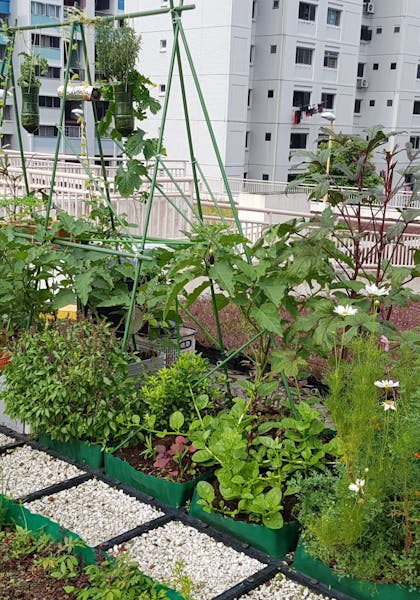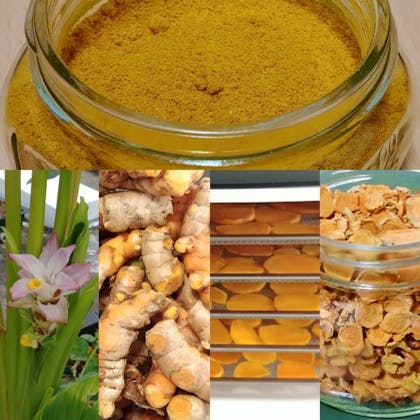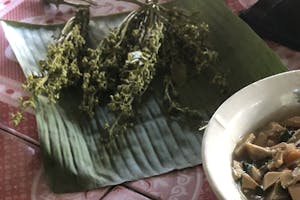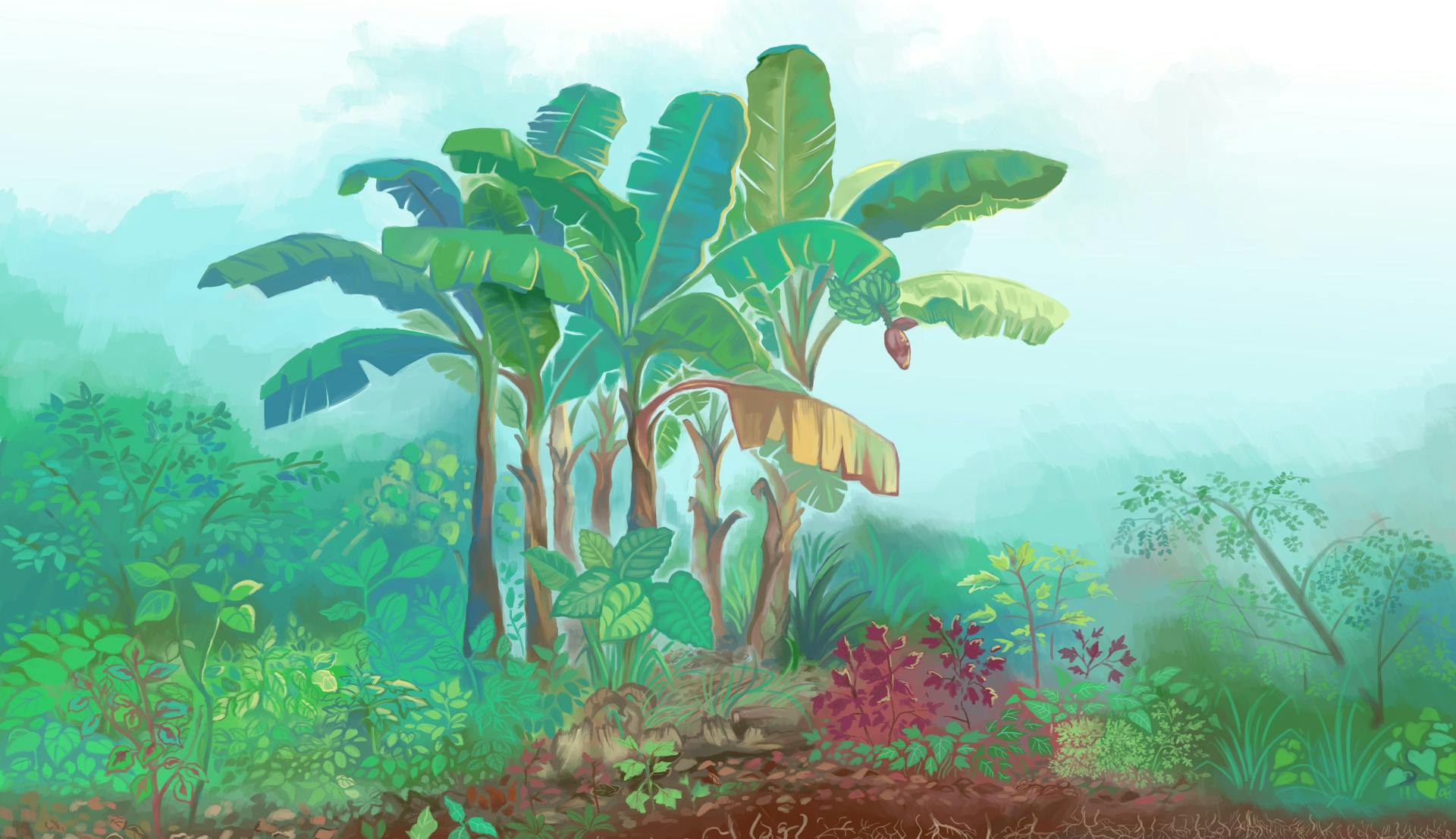
Interview with Ong Chun Yeow, attempts at food-growing in Singapore
This article is part of our theme-based journazine titled "The Sauce". The inaugural issue focuses on Soil, as we believe that soil is the foundation of all things to come. Print and digital copies of the full issue are available here. Check it out for more stories from the community and how Foodscape Collective's projects have come about.
The Sauce (TS): Chun Yeow, I understand that you began learning to grow edibles for your own consumption almost ten years ago. Can you share how you got started on this journey?
CY: It was 2012 and I got really inspired after attending a workshop on how to grow vegetables. The trainer taught us her tried-and-tested “secret” formula soil mix of 30% sand and 70% compost that will work for growing a vegetable plant in a plastic cup. The cup is the size of a normal bubble tea cup. She also taught us the soil-less growing method of using an ‘A’ and ‘B’ solution which I then first got to know as hydroponics.
All the information given was so interesting and I got to know about soil mixes and growing methods for different types of plants (e.g. roots, leaves, fruits, etc). I went on to teach my mum the methods and started growing edibles along her apartment corridor while using the space for making compost.
2013 is a year of great “soil realisations” as it provided me with more opportunities and interesting projects on farming and urban gardening. With Ground-Up Initiative (GUI), we visited green places like Bollywood Veggies, a countryside organic farm with educational activities and an eatery using local herbs and plants. The team also went on a field trip to Thailand where we learnt about the uses of EM (effective microorganisms) in agriculture, water treatment and composting. In addition, for the first time, I experienced how the locals compost leftover cooked meat with wood vinegar, which is a by-product from charcoal-making.
Together with Edible Garden City, we started a community garden at the Sun Yat Sen Nanyang Memorial Hall as part of their Corporate Social Responsibility (CSR) for heritage and community. With much fanfare, we recruited a team of volunteers to help clear spaces for growing edibles, learn to set up trellises and do propagation. I had the opportunity to learn about soil substrate and soil fertilization.
TS: Having been exposed to different techniques of growing, and after almost ten years, do you have a tried and tested method, or how would you describe your growing methods today?
CY: Interestingly, my growing methods are still evolving, changing and adapting all the time! As much as I am leaning towards a preference that plants should be grown in the soil as naturally provided by Nature, I also appreciate that there are different schools of thoughts and growing methods which can be quite extreme while adapting to spaces of vast differences (i.e. rural vs suburban vs urban). Most importantly, I believe in eating natural and fresh, so I choose to avoid methods that go against this principle, or to have constructive discussions that might show me otherwise. In conclusion, grow in a way that will nourish your body, heart, mind and soul.
TS: What were some of the big moments of learning and challenges you’ve experienced on this journey?
CY: By end of 2013, I took urban farming up another notch. My family and I decided to rent a plot of land at Green Valley to start growing our own vegetables. With a friend, John, we shared the land and worked on our spaces with different planting and growing methods. I learnt a lot about farming from the gardeners and old-timers there especially in amending the poor clayey soil with cocopeat, chicken manure and even burning or sunning it to clear pests. However, due to high maintenance and lack of time to commit to the farming chores, we gave up the plot before end 2014. Without more new spaces to grow edibles, I stopped working with the soil until the fateful moment of getting my own place at the end of 2015.
TS: How has getting your own place changed your access to space for growing edibles?
CY: Having my own HDB flat means that I can start growing in pots along the corridor. Also nearby is a community garden on a multi-storey carpark rooftop where residents could bid for a plot in sizes of small (approx. 1m x 4m), medium (approx. 1.5m x 3m) and large (approx. 1.5m x 4m). In early 2016, I successfully balloted for a small plot, where I have since planted and grown many edible plants like an assorted variety of Asian greens (e.g. kai lan, nai bai, bok choy, kang kong, mani cai, bayam, sweet potato leaves, Malabar spinach), moringas, okras, long and flat beans, radishes, brinjals, types of gourd (bitter gourd, pumpkin, hairy gourd), gingers and sunflowers!

Harvested turmeric powder
At times, I would harvest close to 3kg of turmeric, dehydrate them, making that into a jar of 250g turmeric powder. I was not familiar with this plant until given some to grow by a really nice fellow gardener, and as I continued to grow more, I got to learn about its amazing properties. That is part of the joy of having a garden — no matter how small, you’re always learning.
So up till now, I feel that the journey has only just begun and am still learning a lot from this miraculous, and so important matter of life known as soil. And I am always grateful to those who share their knowledge selflessly (worth mentioning is the nature farming expert, Mr Tang) in creating regenerative good soil that is both important for growing healthy food and also good for the environment.
TS: As a staff of the National Heritage Board, you’ve had the opportunity to set up a staff garden at the National Museum of Singapore (NMS). Can you tell us how this came about, what is growing there, how is it maintained and has creating this garden space change anything for the staff?
CY: The staff garden was created in April 2017 as a form of recreation engagement and interest from some of the NMS staff. I was recommended to be part of the committee as some knew I have green fingers and been maintaining quite a few green edible spaces. We started building the deck garden with a small team of enthusiastic staff, planting mostly edibles which replicate those grown in my own gardens. Subsequently, as a few cleaners and new gardeners join, a variety of ornamental plants like orchids, flowering and indoor plants were introduced.
However, after a year and a half, due to low participation and unable to recruit more staff to maintain the garden, it was closed for renovation and re-designated for other museum purposes. Generally, it was a fantastic experience as I get to enjoy gardening in a museum with, people who really like gardening or wanted to learn new skills, even though that was with only a small handful of staff. Moreover, I got to collaborate with a restaurant within the museum for weekly kitchen waste and used coffee grounds to make into compost. The restaurant staff were very friendly and so helpful that one of the chefs even attended my composting workshop for the museum staff.
About the author

Ong Chun Yeow is an urban farmer who grows edible produce along the corridor and on a rooftop garden. He works in the public sector as a professional specialising in cultural heritage technology. As a nature lover turned farmer turned environmental advocate, Chun Yeow has been involved in the green community in Singapore for much of the past decade.
Share this article
Dig Around
Contact Us
Drop us an email or DM on Instagram if you would like to give us feedback, support us in any way, or just to connect!
Foodscape Collective
Foodscape Collective is a ground-up community with a mission to co-create a fair and inclusive circular food system for all. We work together to create communities and livelihoods through collaborative and supportive practices.
Copyright (C) 2023 - Foodscape Pages. All Rights Reserved








